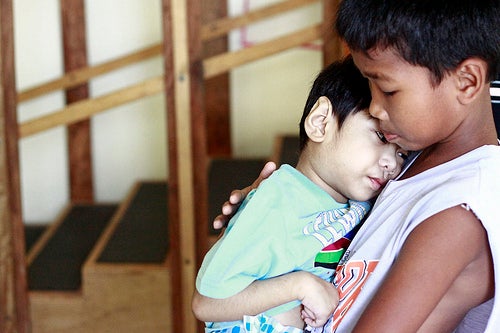
This week, the governments of India, Ethiopia and the United States will host a Child Survival Call to Action summit, with the participation of country and global leaders. This is a timely and critical event, aimed at further strengthening global and country commitment and country accountability for MDG4, to reduce child mortality. Though we’ve seen substantial improvement on this goal, the countries that need our support and partnership most may not reach it by 2015.
In the last decade, we’ve witnessed impressive efforts in ensuring children reach age 5 healthy and happy. Initiatives to expand cost-effective vaccines and prevent and treat malaria have greatly contributed to saving children’s lives. But more than 7.2 million children still die each year, the vast majority in developing countries, and reducing infant and, in particular, neonatal mortality, has become a formidable challenge.
Reaching MDG 4 will require strong political and policy commitment, which this week’s summit will contribute to. It will also require a decisive scale-up on nutrition (for pregnant women and children around the first 1000 days, from conception to age 2), health systems (in perinatology in particular), and other sector contributors including sanitation, girls’ education, and clean energy.
Elevating these priorities, across sectors and in the context of strong health systems, means the global community needs to consolidate efforts on MDG 1c, 4 and 5 – the “orphan MDGs” relative to overall international aid for health. Without expanding health systems strengthening, we won’t be able to address the critical needs of reproductive, maternal and newborn health, all crucial for child survival.
At the World Bank, we’re committed to improving maternal and child health through strengthening national health systems, linking financing to performance, and protecting the poor from ill health and unaffordable costs and treatment.
Our results-based financing approach in particular has helped country leaders yield impressive results in saving children’s lives. Rwanda is one shining example: incentives for increasing the quantity and quality of health facility services led to a 21% increase in institutional deliveries; a 64% increase in preventive visits for children under age 2; and a 133% increase in visits for children ages 2-5. Countries like Argentina and Afghanistan have also seen significant improvements.
How do we know that the world is making progress in saving the lives of mothers and children? How do we ensure that there is full transparency in resource allocation and policy decisions so that all stakeholders, including women and children in need, will have a voice?
The answer is strong evidence, open information, and a shared accountability, one that captures the full range of policy and investments along the maternal/child health service delivery value chain. Investing in commodities is necessary. Investing in effective and equitable health systems is imperative. This week’s Child Survival Call to Action summit is a key step in the right direction.
Related:


Join the Conversation